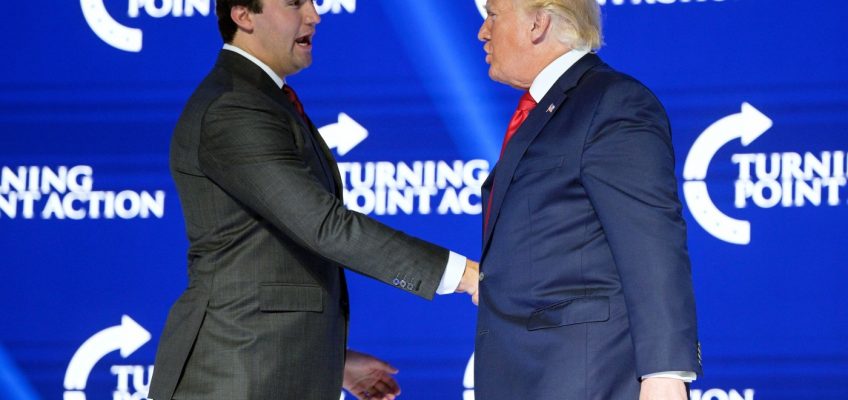By Jamie Ducharme, KFF Health News
After losing 50 pounds on the injectable weight loss medication Zepbound, Kyra Wensley received a surprising letter from her pharmacy benefit manager in April.
Her request for coverage had been denied, the letter said, because she’d had a body mass index of less than 35 when she started Zepbound. The 25-year-old who lives in New York had been taking Zepbound without incident for months, so she was confused: Why was her BMI, which had been around 32 when she started, becoming an issue only now?
Wensley had no interest in quitting an effective drug. “Going right off like that, it’s easier said than done,” she said.
Her doctor fought to keep her on the GLP-1 agonist, the category that includes weight loss and Type 2 diabetes drugs Ozempic, Wegovy, Mounjaro, and Zepbound. But Wensley ultimately had to switch from Zepbound to Wegovy to meet her plan’s requirements. She said she doesn’t like Wegovy as much as her old medication, but she now feels lucky to be on any GLP-1.
Kyra Wensley’s doctor fought to keep her on the injectable weight loss medication Zepbound, but Wensley ultimately had to switch to Wegovy, a different GLP-1 agonist, to meet her health plan’ s requirements. ((Lori Wensley)/KFF HEALTH/TNS)
Lots of research suggests such medications must be used indefinitely to maintain weight loss and related health benefits. But with list prices of roughly $1,000 a month, public and private payers are struggling to keep up with ballooning demand for GLP-1 weight loss drugs and in some cases are eliminating or restricting their coverage as a result.
North Carolina Medicaid plans to end GLP-1 coverage for weight loss on Oct. 1, just over a year after starting the coverage. Pennsylvania is planning to limit Medicaid coverage to beneficiaries at the highest risk of complications from obesity. And despite recent reports of a potential federal pilot program to extend coverage of GLP-1 obesity drugs under Medicaid and Medicare, all state Medicaid programs are likely to be under pressure due to steep spending cuts in the budget reconciliation package recently signed into law by President Donald Trump.
Already, many GLP-1 users quit within a year, studies suggest — often due to side effects, high costs, or insurance issues. Now a growing number of researchers, payers, and providers are exploring deliberate “deprescription,” which aims to taper some patients off their medication after they have taken it for a certain amount of time or lost a certain amount of weight.
The U.K.’s National Institute for Health and Care Excellence, which creates guidance for the National Health Service, recommends two-year limits on the use of some weight loss medications, such as Wegovy. And the concept was raised in a recent Institute for Clinical and Economic Review report on affordable access to obesity drugs.
A. Mark Fendrick, who directs the Center for Value-Based Insurance Design at the University of Michigan, has argued that if some people using GLP-1s to lose weight were eventually transitioned off, more people could take advantage of them.
“If you’re going to spend $1 billion or $100 billion, you could either spend it on fewer people for a long period of time, or you can spend it on a lot more people for a shorter period of time,” he said.
Fendrick’s employer, the University of Michigan, indeed does that. Its prescription drug plan caps coverage of GLP-1 drugs at two years if they’re used solely for weight loss.
Jamie Bennett, a spokesperson for Wegovy and Ozempic maker Novo Nordisk, declined to comment on the concept of deprescription, noting that its drugs are intended for chronic conditions. Rachel Sorvig, a spokesperson for Zepbound and Mounjaro manufacturer Eli Lilly, said in a statement that users should “talk to their health care provider about dosage and duration needs.”
Studies have shown that people typically regain a substantial amount of weight within a year of stopping GLP-1 medications, and that many people who quit ultimately go back on the drugs.
“There’s no standard of care or gold standard on how to wean right now,” said Allison Adams, an obesity and internal medicine doctor with UK HealthCare in Kentucky.
But the math shows why time-limited coverage is appealing to payers that struggle to pay for beneficiaries’ GLP-1 prescriptions, said Michelle Gourdine, chief medical officer for the pharmacy benefit manager CVS Caremark.
And states are “between a rock and a hard place,” said Kody Kinsley, who until January led North Carolina’s Health and Human Services Department. “They’re going to have to look at every single thing and trim dollars everywhere they can.”
Pennsylvania was looking for cost-saving strategies even before the new federal tax-and-spending law, according to Brandon Cwalina, press secretary for the state’s Department of Human Services. Pennsylvania projects it will spend $1.3 billion on GLP-1 drugs this year.
Related Articles
States are taking steps to ease access to COVID-19 vaccines as they await federal recommendation
Many Black, Latino people can’t get opioid addiction med. Medicaid cuts may make it harder
West Nile virus cases running higher than normal, prompting health warnings
Barry Sanders advocates for people to know their cholesterol numbers a year after his heart attack
Strokes can cause debilitating damage. Two UConn researchers have found a way to limit it
Plans could see real savings, Fendrick said, if they covered GLP-1s for initial weight loss then moved people to cheaper options — such as more affordable drugs or behavioral health programs — to maintain it.
Plenty of companies are eager to sell insurers, employers, and individuals on behavioral alternatives. One is Virta Health, which advertises its nutrition-focused weight management program as “a proven approach for deprescribing GLP-1s when clinically appropriate.” A Virta-funded study assessed 154 people with Type 2 diabetes who stopped using GLP-1 medications but continued following Virta’s program, concluding that their weight did not significantly increase after a year.
Researchers affiliated with a European weight management company also recently reported that slowly tapering off the medications may help maintain weight loss.
For employers and insurers, the “initial question” was whether to cover GLP-1s for obesity, said Virta CEO Sami Inkinen. “Now, basically, everyone’s coming to the middle and asking, ‘How do we responsibly cover these drugs?’”
Part of responsible coverage, Inkinen said, is providing other forms of support to patients who stop using GLP-1 medications, by choice or otherwise.
For some people, however, maintaining weight loss without a GLP-1 remains a challenge, even with other options available.
Lily, who lives in Michigan, lost almost 80 pounds in roughly 18 months on Wegovy. But she had to quit the drug when she turned 26 and left her parents’ insurance plan this year. The plan her employer offers stopped covering GLP-1s for weight loss right around the time she joined.
Lily, who asked to be identified by only her first name because she is not out to her family as transgender, has tried other medications since then, and previously tried lifestyle programs to control her weight. But she said nothing works as well for her as Wegovy.
She has regained 20 pounds since going off the drug at the beginning of the year and worries that number will continue to rise, potentially contributing to future health problems.
“Just give people the drugs,” she said. “It seems cheaper and safer in the long run.”
©2025 KFF Health News. Distributed by Tribune Content Agency, LLC.




